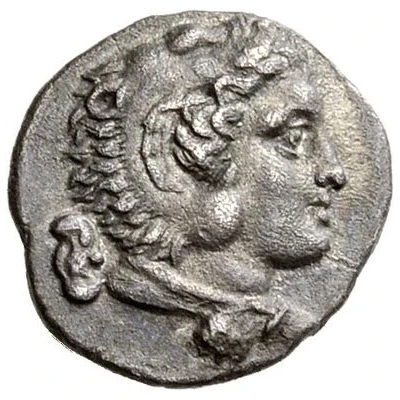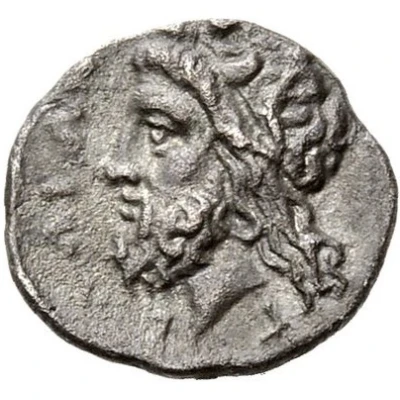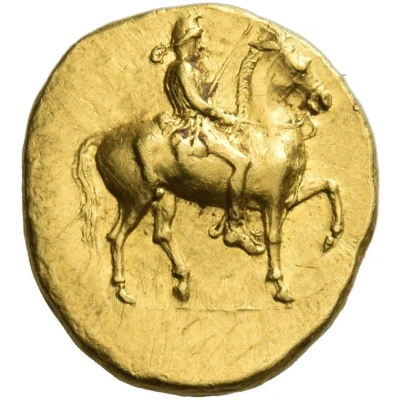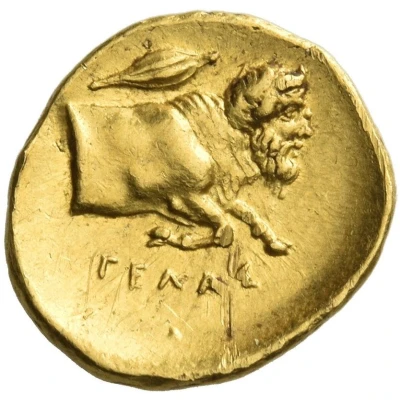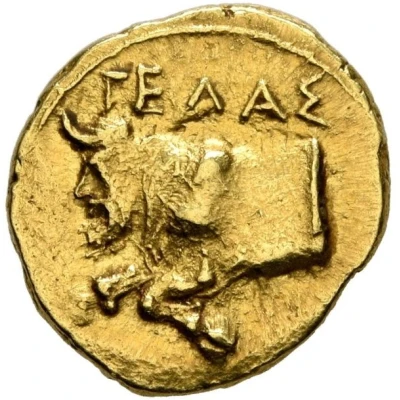
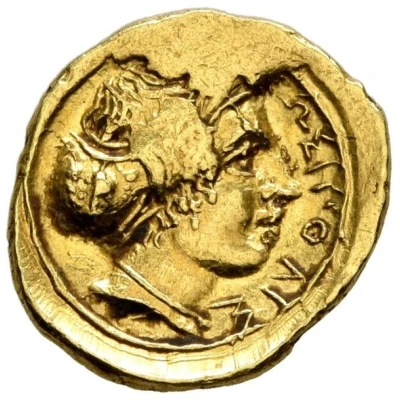

© Leu Numismatik
1⅓ Litra 406 BC - 405 BC
| Gold | 1.15 g | 11 mm |
| Issuer | Gela (Sicily) |
|---|---|
| Type | Standard circulation coin |
| Years | 406 BC - 405 BC |
| Value | 1⅓ Litra (4⁄3) |
| Currency | Litra |
| Composition | Gold |
| Weight | 1.15 g |
| Diameter | 11 mm |
| Shape | Round (irregular) |
| Technique | Hammered |
| Orientation | Variable alignment ↺ |
| Demonetized | Yes |
| Updated | 2024-10-10 |
| Numista | N#384834 |
|---|---|
| Rarity index | 100% |
Reverse
Head of Sosipolis to right, her hair in ampyx and sphendone and wearing pendant necklace.
Script: Greek
Lettering: ΣΩΣIΠΟΛIΣ
Comment
Sosipolis, whose name literally translates as 'saving the city', appears only twice on the coinage of Gela. She is usually identified as a nymph, but her aptronym clearly expresses a plea to the gods for help in a time of crisis. Jenkins connects the earlier issue of tetradrachms, where Sosipolis crowns the river-god Gelas with a wreath (Jenkins, Gela, 371), with the ultimately successful Greek campaigns against the native Sikeliotes in the 440s BC. The second type, however, which we have here, was struck some decades later: it has been identified as a 1 1/3 litra, which would be the equivalent of a silver tetradrachm at the usual exchange rate from gold to silver of 1:15.Unlike the earlier victory tetradrachms, the 1 1/3 litra was clearly an emergency issue struck in great haste at a time of peril. Only a handful examples are known, many of which show significant die wear and die breaks. The choice of gold - very rare in Sicily - hints at an exceptional time of crisis, which perhaps involved melting down gold treasures from the temples of the city. Jenkins plausibly connects the issue with the destruction of Akragas in 406 BC and the upcoming siege of Gela by the Carthaginians in 405 BC, in the course of which the city was ultimately sacked and destroyed. Although the surviving inhabitants were later allowed to resettle in the ruins of their once mighty town, Gela was prohibited from rebuilding its fortifications and never fully recovered from the blow.
Interesting fact
The 1⅓ Litra coin from Gela (Sicily) made of Gold weighing 1.15 g is interesting because it was used as a form of currency in ancient Greece, specifically in the city of Gela, and it's made of gold, which was a valuable and sought-after metal at the time.
